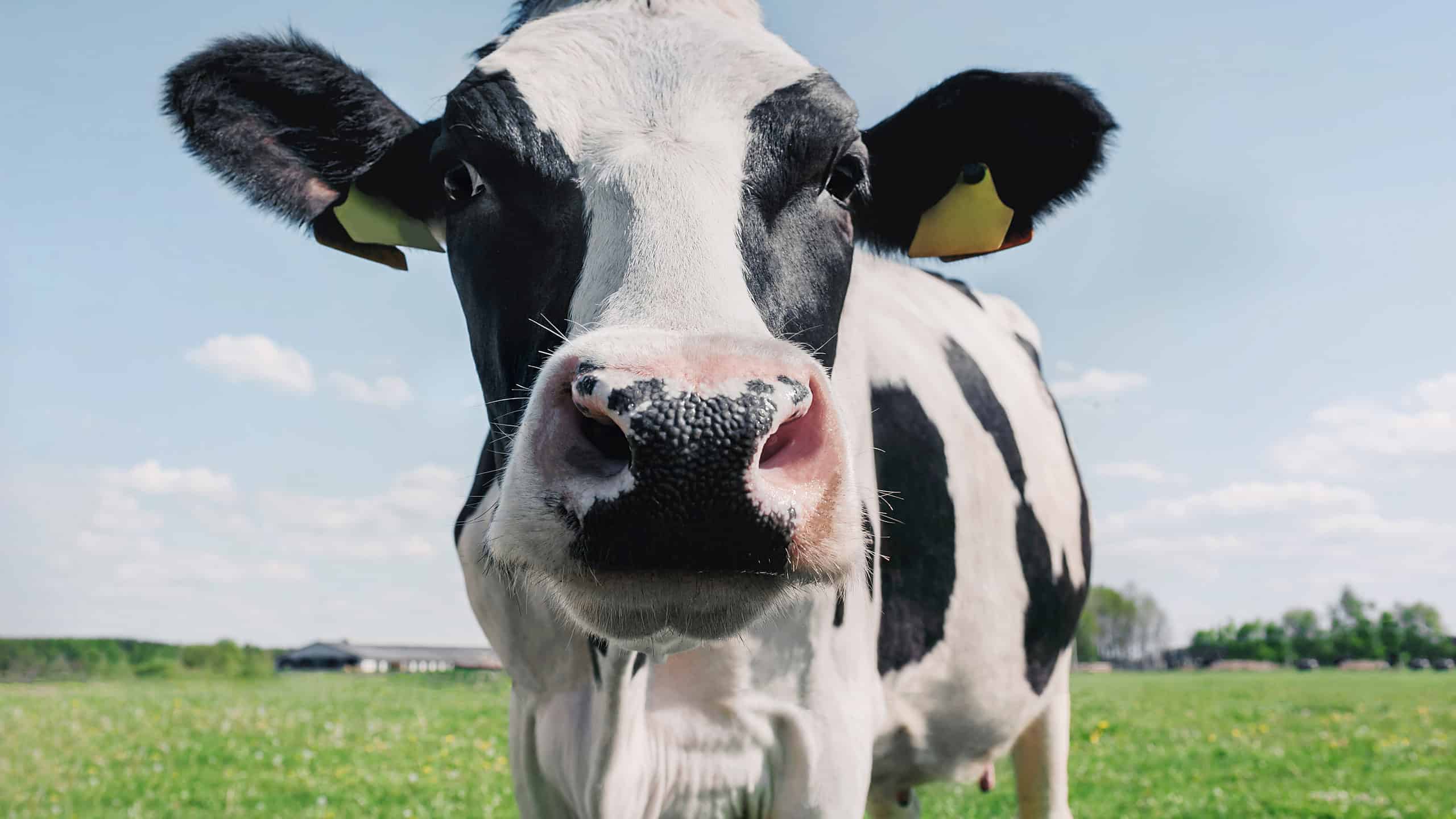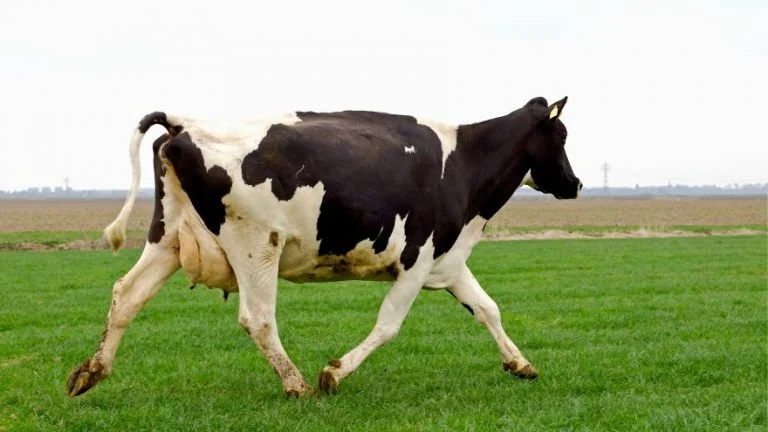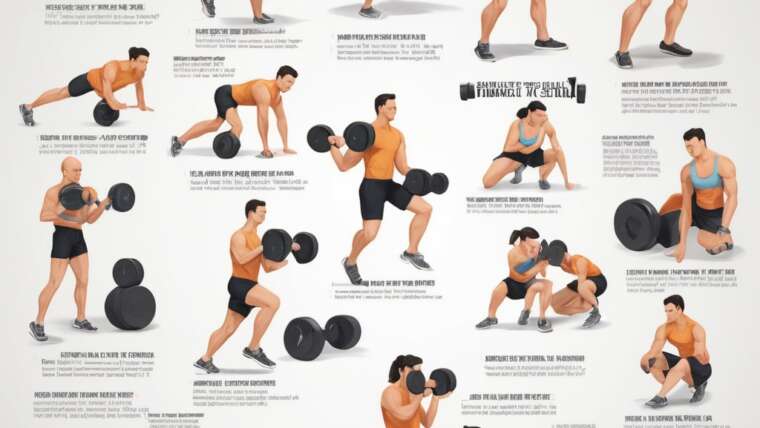A cow’s running speed might surprise you. These farm animals can sprint at an average speed of 17 mph and reach up to 25 mph when they need to. Most people don’t picture cows as fast runners, but these animals can move quickly.
The speed capabilities of cattle are impressive, especially given their size and weight. A cow’s running ability varies based on its build and breed type. Dairy cows don’t match their beef cousins’ top speeds. This difference stems from generations of selective breeding that focused on milk production instead of physical performance. The cow’s heavier build limits its speed compared to horses and affects its mobility. This piece covers cow running capabilities, animal speed comparisons, and the fascinating aspects of bovine physical abilities.

Table of Contents
- 1 How fast can a cow run?
- 2 How cow speed compares to other animals
- 3 Surprising physical abilities of cows
- 4 Can humans outrun cows?
- 5 Fun facts about cow behavior and movement
- 6 Here are some FAQs about how fast can a cow run:
- 6.1 How fast can a cow run in mph?
- 6.2 Can a cow run faster than Usain Bolt?
- 6.3 Can a cow jump a 5 foot fence?
- 6.4 Can a human run faster than a bull?
- 6.5 Is it possible to outrun a bull?
- 6.6 Do cows feel pain the same way we do?
- 6.7 Can humans run 40 mph?
- 6.8 What to do if cows chase you?
- 6.9 Can Usain Bolt outrun a grizzly bear?
How fast can a cow run?
People often don’t realize how fast these large farm animals can move. You might be surprised by what these animals can do.
Average speed in mph and km/h
Cows might look relaxed most of the time, but they can really move when they want to. A typical cow runs at about 17 miles per hour (27 km/h). This is faster than most humans can run, so you need to respect what these animals can do.
Cows usually walk slowly at about 2 mph during their daily activities, but they speed up faster when they need to. These animals can switch from a calm walk to a full gallop, which shows how athletic they are despite their size.
These animals don’t run fast for long periods. They sprint in short bursts if they feel threatened or excited, like when it’s feeding time. This matches how their wild ancestors behaved to survive.
Top speed of cows and bulls
The fastest speeds we’ve seen from cattle vary between sources. Athletic ones can reach 25 mph in quick bursts. Some reports show speeds between 25-30 mph for really motivated ones.
Bulls run faster than cows or steers. They move 3-5 mph faster than other cattle, and many reach speeds of 18-21 mph. Their extra muscle mass, stamina, and physical build give them this edge.
Age and build make a big difference in how fast they can run. Young cattle, especially teenage heifers who haven’t had calves yet, move faster than older cows with full udders and bellies. This makes sense since mature females carry more weight.
How fast can a dairy cow run?
We don’t have many studies about dairy cow speeds, but they’re like other cattle. These breeds were bred to produce milk rather than run fast, so they might not be as quick as beef breeds.
Different breeds run at different speeds. Medium and smaller breeds tend to be faster than bigger domestic ones. The breeds that still look like their wild ancestors usually show better athletic ability.
Dairy cows can still outrun humans easily. Regular people run between 6.2 and 8.7 mph, while most cows can go twice that fast. Even top athletes max out at 13-15 mph, which isn’t as fast as an average cow.
A cow running full speed could finish a 100-meter dash in about 10 seconds, which puts them near Olympic sprinter territory. This speed is a big deal as it means that farmers and visitors should be careful around cattle. The friendliest cow can become dangerous if something startles it into running.

How cow speed compares to other animals
Cattle hold a surprising spot in the animal kingdom’s speed rankings. They’re neither the fastest nor the slowest runners, which makes their athletic abilities worth a closer look.
Cows vs horses
Farm animals show interesting speed differences, with horses clearly running faster than their bovine friends. A typical cow runs at 17 mph and tops out at 25 mph, while horses easily reach 30 mph. The gap becomes even wider with specialized breeds – racehorses hit amazing speeds of 40-44 mph.
You can see this speed difference play out on any farm. Anyone who’s watched both animals run knows horses are much quicker off the mark and keep running longer. Horses stay faster on any type of ground and distance, which explains why they’ve been so valuable for transportation and herding – including rounding up the slower cows.
Ranchers and farmers often point out an interesting fact: both animals can take off quickly from a standing start, but horses keep their speed much longer. Cows might sprint away but usually slow down after a short distance.
Cows vs deer
Deer leave cattle in the dust with their natural speed of about 30 mph. This speed gap shows how differently these plant-eating prey animals developed over time.
Life in the forest shaped deer into quick, agile runners that could escape predators in rough terrain. Their slim build, longer legs, and lighter weight help them accelerate quickly and move smoothly through wooded areas.
Modern cows still have some speed from their wild ancestors, but they can’t match a deer’s smooth movements and steady pace. Watch both animals react to danger – deer bounce away gracefully while cows show raw power but less finesse in their escape.
Why cows are slower than other herd animals
Cows run slower than horses and deer for several reasons. We bred cattle over many generations to produce milk or beef, which gave them bulkier bodies that favor these traits over speed and agility.
Body differences tell the story – dairy cows carry heavy udders full of milk, while beef cattle pack on dense muscle. These features add weight but don’t help them run faster. Today’s cattle also carry more fat than their wild ancestors or other herd animals, which slows them down.
Their unique digestive system also affects their speed. Four-chambered stomachs process grass well but add lots of weight, especially after eating. Athletes would say this creates a poor power-to-weight ratio.
A cow’s skeleton explains more about their speed limits. They have shorter, thicker leg bones built to hold up their heavy body rather than run fast. Their wide, barrel-shaped body also creates more wind resistance than sleeker, faster animals.
These limitations don’t make cows slow or helpless. Their top speed of 25 mph runs circles around any human, giving them enough protection from most natural threats they might face.
Surprising physical abilities of cows
Cattle’s physical abilities go way beyond their running capabilities. These animals possess remarkable traits that might surprise even seasoned farmers. We’ve looked at how fast cows can run, but these gentle giants have other amazing physical characteristics worth a closer look.
Can cows jump?
In stark comparison to their bulky appearance, cows excel at jumping. A young, fit cow can clear a five-foot fence with the right motivation. Some exceptional cases show cows jumping up to six feet high—enough to reach a house’s roof in one British case.
This talent isn’t just based on stories. Competitive cow jumping events exist in Finland and other places, much like horse show jumping competitions. These events highlight the natural athletic prowess that most people wouldn’t expect from cattle.
Notwithstanding that, cows don’t spend their days practicing jumps. They involve themselves in jumping behavior for just 5-10 minutes each day. The time before sunset seems to be when these bovine athletes prefer their acrobatics. Researchers note: “They often do it right before sunset, and then they can really jump. It’s quite the rodeo. It’s really a party”.
Hereford cattle owners have seen their animals jump over 5-foot wooden rail fences repeatedly when determined. This unexpected agility makes proper fencing a vital part of cattle management. Underestimated barriers might not contain these motivated animals.
How cows kick differently than horses
“Cow-kicking” describes the unique way cows strike with their hind legs—though this term often applies to horses showing similar behavior. Horse kicks typically go straight back, while cow kicks sweep sideways with the hind leg.
This kicking style evolved to work as a defense during milking. One source explains: “It got its name from cows that kicked when being milked. Perhaps their udder was sore or they were anticipating that the milker would soon be attaching the dreaded milking machine!”
The sideways motion sends a clear message: “Get out of here, I don’t like that”. This unique kicking method helps the cow protect its vulnerable underside while warning off threats from the side or rear.
Anyone working with cattle should understand this kicking behavior to stay safe. The kick’s sideways nature can surprise handlers since it comes from an unexpected angle compared to other livestock’s kicks.
Can cows climb stairs?
Cows and stairs have a complex relationship. These animals can climb stairs—they just prefer not to, especially going down.
Several physical factors cause this reluctance. Stairs are artificial structures sized for human legs rather than cow anatomy. A typical 35-degree incline creates big challenges for animals weighing between 1,600 to 2,400 pounds.
A cow’s limited neck mobility adds another challenge. Looking down at such an angle makes it hard to see ahead—something these animals naturally avoid. Their front-heavy weight distribution and unique knee and hip structure make it tough to shift weight backward, which they need to do when going down stairs.
Cows can use stairs if needed, though experts advise against this practice due to safety risks. Ramps work much better for these animals, especially with non-slip surfaces and gentle slopes.
These unexpected physical abilities show why understanding how cows move matters for safety and animal welfare. Despite their impressive running speeds, jumping abilities, and unique kicking style, these animals stay cautious about certain movements—showing they know their physical limits.
Can humans outrun cows?
You might wonder if humans can outrun cows. This isn’t just a random thought—it could save your life if you ever face an angry bovine. Let’s get into what we know about how fast cattle can move.
Short distance vs long distance
Numbers paint a clear picture when it comes to sprinting—cows beat humans every time. Most adults run between 6-10 mph, and athletes typically reach 10-13 mph. All but one of these athletes rarely hit 15 mph. Cows, on the other hand, cruise at 17 mph and can sprint up to 25 mph.
This means if a startled cow charges, you won’t win a race. One expert puts it plainly: “I don’t care how fast you think you are… cows can reliably outrun humans as a rule”.
The story changes over longer distances. We learned that cattle run in short bursts instead of going the distance. A fit person might outlast a pursuing cow since bovines aren’t built to run for long periods.
Ground incidents with cow chases
Cow escapes happen more often than you’d think. Houston saw 31 cattle create havoc on I-45 North Freeway after a trailer latch opened during transport. A car hit one cow and flipped over.
Boise residents watched about 100 cows wander city streets for four hours before their recovery. Brooklyn saw dozens of people chase a four-month-old cow that escaped from a slaughterhouse.
Safety tips when walking near cattle
Experts share these tips if you meet aggressive cattle:
- Never run if threatened—this might trigger their chase instinct
- Make sharp 90° turns when pursued since cows can’t corner well at speed
- Keep dogs leashed near cattle, but release them if cows charge
- Move quickly and quietly past cattle instead of running
- Find the closest exit from the field—gate, fence, or hedge
- If cornered, act vocally and physically threatening toward approaching cows
These guidelines could save your life. Remember, cattle-related incidents cause about five deaths and 80 injuries each year.
Fun facts about cow behavior and movement
Cattle show amazing speed abilities and movement patterns that tell us a lot about how they think and feel. My experience as a sports performance specialist who studies animal athletics has given me first-hand insights into these behaviors.
Why cows run in short bursts
These powerful animals can sprint up to 25 mph, but they only show off this speed in quick bursts. They use these sprints to play with each other, establish dominance, or escape from things that scare them. The way they run in bursts shows their natural adaptation as prey animals rather than distance runners. Their heavy body weight and metabolism mean they would get tired and risk injury if they ran at high speeds for too long.
How cows react when startled
Cattle show clear signs of fear when they face something unfamiliar. The sort of thing I love to watch is how a scared cow moves quickly and unpredictably with its ears up and tail flicking. The animal might also make loud noises, turn sideways in defense, shake its head, or scratch at the ground – these are all signs that it’s getting more upset. These animals would rather run away than fight back. One interesting fact is that fear spreads quickly through the herd – if one cow panics, others often follow suit.
Do cows run when happy?
They sure do! Young cows love to run and jump around when they can act naturally. Just like puppies, calves express their joy through movement. These animals get excited at the time they learn new things, get treats, or head out to pasture. Farmers talk about something called “happy runs” – that’s when cattle celebrate their freedom by bucking, playing, and galloping around like horses.
The truth about cow speed and athleticism might surprise you. These animals we often see as slow and clumsy can actually move with amazing agility. A typical cow runs at 17 mph and can reach speeds up to 25 mph. These numbers definitely make us think differently about farm animals’ athletic abilities.
The speed of a cow depends on several factors. Beef breeds can run faster than dairy cows because of years of selective breeding. Bulls are even more impressive – they’re 3-5 mph faster than cows or steers because of their extra muscle mass.
Cows might not keep up with horses or deer, but they hold their own in nature’s speed rankings. Their speed limits come from years of breeding that focused on milk and meat production rather than movement. All the same, these animals can outrun even the fastest human sprinters.
The sort of thing I love about cows goes way beyond their running ability. They can jump five-foot fences, kick sideways in a unique way, and show remarkable caution on stairs. This shows just how aware they are of their bodies.
Anyone working with cattle needs to know about these physical abilities to stay safe. No human can outrun a determined cow in a short sprint, though we might win a marathon. The safety guidelines mentioned earlier could save lives during unexpected encounters.
These massive animals show pure joy through movement. Watch them during their “happy runs” in the pasture and you’ll see that speed isn’t just about survival – it’s how they express themselves.
Next time you pass by cattle quietly grazing in a field, note that these peaceful giants are natural athletes. They can burst into surprising speeds, make impressive jumps, and move in unique ways that developed through thousands of years of domestication.
Here are some FAQs about how fast can a cow run:
How fast can a cow run in mph?
A healthy, full-grown cow can typically run at speeds of up to 25 miles per hour. This speed can vary based on the breed, age, and health of the animal, but they are surprisingly quick over short distances.
Can a cow run faster than Usain Bolt?
Yes, a cow can run faster than Usain Bolt. While Usain Bolt’s top recorded speed is approximately 27.8 mph, this was a brief sprint under ideal conditions; a cow’s consistent top speed of 25 mph is often enough to outpace a human in a real-world scenario.
Can a cow jump a 5 foot fence?
It is highly unlikely for a typical cow to jump a 5-foot fence. Cows are not natural jumpers like horses or deer, and most standard livestock fencing at around 4-5 feet is sufficient to contain them, though particularly athletic individuals might manage lower obstacles.
Can a human run faster than a bull?
No, a human cannot outrun a bull in a straight sprint. Bulls can reach speeds of 35 mph or more, far exceeding the capabilities of even the fastest human sprinters, making escape over a short distance impossible.
Is it possible to outrun a bull?
While you cannot outrun a bull in a straight line, it is sometimes possible to avoid one by using agility. Bulls are large and less maneuverable, so quickly changing direction or putting obstacles between yourself and the animal can be an effective strategy.
Do cows feel pain the same way we do?
Yes, scientific evidence indicates that cows feel pain in a way that is physiologically similar to humans. They have complex nervous systems and show behavioral signs of distress and suffering when injured or in pain.
Can humans run 40 mph?
No, humans cannot run 40 mph. The current human speed record is held by Usain Bolt at approximately 27.8 mph, and biomechanical studies suggest the absolute physiological limit for humans is likely below 30 mph.
What to do if cows chase you?
If cows chase you, do not run. Instead, stay calm, back away slowly, and avoid making direct eye contact. If you cannot retreat calmly, put a solid obstacle like a tree or a gate between you and the animals.
Can Usain Bolt outrun a grizzly bear?
No, Usain Bolt could not outrun a grizzly bear. Grizzly bears can run at speeds up to 35-40 mph, significantly faster than Bolt’s top speed of 27.8 mph, making escape by speed alone impossible.


